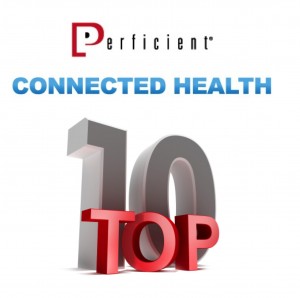 A new week brings us to another trend in our 2014 Connected Health Countdown. We are nearing our halfway mark with:
A new week brings us to another trend in our 2014 Connected Health Countdown. We are nearing our halfway mark with:
Trend 6: The Evolution of Social Media into Care and Patient/Member Acquisition
Over the course of 2012 and 2013, many healthcare organizations were taking the dive into social media for the first time. However, the market has now matured to a point where healthcare organizations, at a minimum, have a social media program of some sort. These social media programs vary widely in maturity and effectiveness. As these social media programs grow in maturity, their interests move passed the general need for public relations outreach and towards ways to drive population health and the business of acquiring new consumers.
Social Media and Population Health
One of the most important uses of social media comes in the form of public health. Social media provides a multi-faceted means of getting new, and perhaps critical, healthcare information out to the public. The viral nature of social media can be a very effective means of disseminating information quickly. This is especially true when the information comes from a highly regarded source and is viewed as immediately applicable to patients. I recall the CIO of a large hospital system in New England reflecting on the use of Twitter to get and disseminate information during a natural disaster.
However, social media can also have an impact on every day health and wellness.
But does it work? While evidence towards social media’s effectiveness to impact health has been mostly qualitative, a few studies have arisen recently to quantify, for the first time, the impact of social on health decision making. One study of note is four-month study from DMCB that followed a group of “at risk persons” of an unpublished chronic condition for a clinical trial that used social media advertising announcements as a means of disseminating healthcare advice. Here’s how the study worked:
- Once individuals met the usual inclusion criteria, and had a unique Facebook account, they were randomly assigned to one of two treatment groups.
- One group used a closed Facebook group to coach individuals about their condition.
- The other group similarly used Facebook to coach individuals about general health improvement.
- Lay “peer leaders” were given a three-hour training session on the “epidemiology of the condition or general health subjects [depending on the group they served] and ways of using Facebook to discuss health and stigmatizing topics.”
- The peer leaders were assigned to a group. Their aim was to reach out to the individuals in their group with messaging, chats, and wall posts.
- At the end of each month of the study, participants completed a variety of surveys.
According to the surveys, intervention patients were more likely to agree to condition testing (44%) than the control patients (20%). The modest decrease in actual tests or risk behaviors were not statistically meaningful. This is the first time that the DMCB has seen reasonable proof that social media by itself can move the behavior needle. These results further support the qualitative evidence for inclusion of Facebook-style closed group social media in the suite of population health management services.
Converting Unknown Consumers
Any business needs to drive new revenue, and hospitals and health plans are no different. Given that approximately 60% of internet users use the internet to look for health information, social media is an abundantly helpful tool that both payors and providers can use to convert unknown consumers into patients/members and to increase loyalty from existing consumers. If hospitals and health plans want to serve the public, then they need to meet the public where they are, which increasingly means on the internet and social media.
The trend of using social, and the digital front door that is the public website, as a cost effective tool towards driving new patient revenues is so important that it has actually become a trend by its own merit. Stay tuned to see where it ranked on our list.
- Connected Health Trend #10: M&A Meets Consumer Engagement
- Connected Health Trend #9: The Connected Enterprise
- Connected Health Trend #8: Sharing Notes with Patients
- Connected Health Trend #7: Care Knows No Bounds
- Connected Health Trend #6: Evolution of Social Media
- Connected Health Trend #5: The Meaningful Use Timeline
- Connected Health Trend #4: Reaching the Mobile 91%
- Connected Health Trend #3: Moving Beyond “Sick Care”
